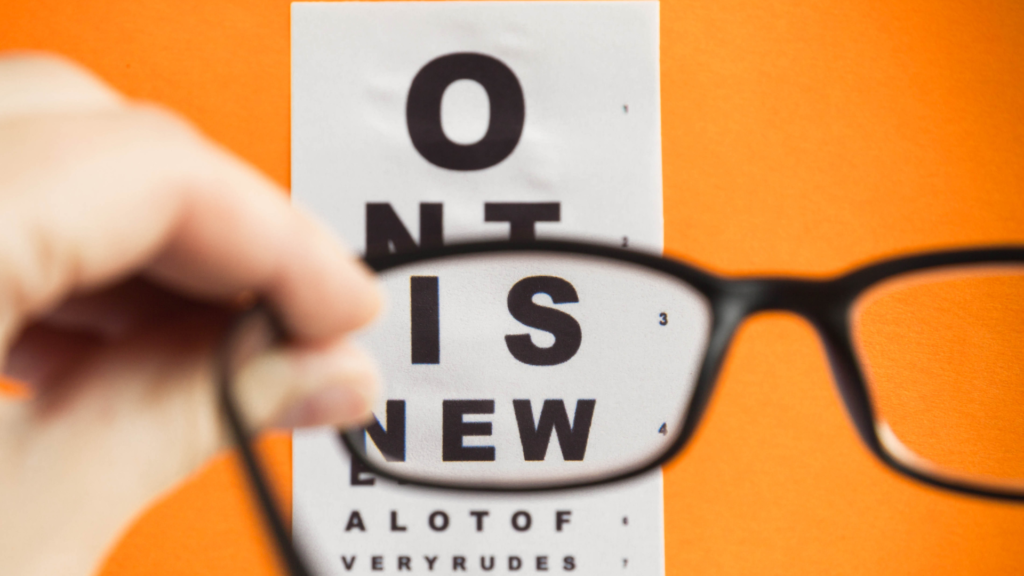This alarming trend, driven by a combination of genetic and environmental factors, Short-Sighte demands immediate attention and action. Let’s dive into what this means for us and how we can combat it.

What is Myopia?
Myopia, commonly known as near-sightedness or short-sighte is a condition where distant objects appear blurry while close objects can be seen clearly. It’s a growing concern worldwide, with current statistics indicating that nearly 30% of the global population is affected.
Causes of Myopia
Short-Sighte by Understanding the root causes of myopia is essential for tackling this issue. Genetic factors play a significant role, with children of myopic parents more likely to develop the condition. However, environmental factors are increasingly contributing to the rise in myopia cases.
ALSO READ : Teen Caffeine Crisis : Why 18% of Adolescents Turn to Coffee for Energy
Increased Screen Time and Reduced Outdoor Activities
The modern lifestyle, characterized by prolonged screen time and reduced outdoor activities, is a major culprit. Children and adults alike are spending more time on digital devices, leading to eye strain and reduced exposure to natural light, both of which are linked to myopia development.
Impact of Myopia on Society
The implications of a myopia epidemic are profound. Short-Sighte Economically, the cost of treatment and loss of productivity can be staggering. Healthcare systems will be strained with increased demand for eye care services. On a personal level, quality of life can be severely affected, with individuals facing difficulties in daily tasks and increased risk of eye-related complications.

Projected Statistics for 2049
By 2049, it is projected that nearly 50% of the world’s population will be short-sighted. This dramatic increase is particularly pronounced in East Asia, where urbanization and intense academic pressures contribute to higher rates of myopia among children and young adults.
Technological Advancements and Myopia
While technology has brought numerous benefits, it also plays a significant role in the rising prevalence of myopia. Continuous exposure to blue light from screens is detrimental to eye health. Understanding this link is crucial for developing strategies to mitigate the impact.
Preventative Measures
Prevention is better than cure. Short-Sighte Encouraging outdoor activities and limiting screen time are fundamental steps. Additionally, eye exercises and regular breaks from screens can help reduce eye strain and slow the progression of myopia.

Role of Education
Raising awareness through education is vital. Schools and communities must implement programs to educate children and parents about the risks of myopia and the importance of maintaining good eye health.
Healthcare Interventions
Regular eye check-ups are essential for early detection and management of myopia. Short-Sighte Prescription glasses and contact lenses are common corrective measures, while orthokeratology offers a non-surgical option to reshape the cornea temporarily.
Innovative Treatments and Research
The future of myopia treatment looks promising with advancements in medical treatments and ongoing research. Genetic therapy is being explored as a potential solution, aiming to address the root causes of myopia at a molecular level.

Global Efforts to Combat Myopia
Efforts to combat myopia are not confined to individual countries. Organizations like the World Health Organization (WHO) are spearheading global initiatives to raise awareness and implement strategies to curb the myopia epidemic.
The Future of Eye Health
Looking ahead to 2049 and beyond, it’s clear that sustained efforts are needed to ensure a healthier vision future. Continuous research, public health initiatives, and individual actions all play a role in shaping the future of eye health.
Personal Stories
Hearing from those affected by myopia can be powerful. Case studies and testimonials provide real-life insights into the challenges faced by individuals and underscore the importance of addressing this issue.
The impending myopia crisis is a call to action for all of us. By understanding the causes, impacts, and preventative measures, we can work together to ensure a future where good vision is accessible to all. Let’s take the necessary steps today to protect our vision for tomorrow.
Find some Answers :
What is myopia? Myopia, or short-sightedness, is a vision condition where distant objects appear blurry while close objects are clear.
How can myopia be prevented? Preventing myopia involves limiting screen time, encouraging outdoor activities, and regular eye check-ups to catch any issues early.
Are digital screens the main cause of myopia? While not the sole cause, prolonged exposure to digital screens contributes significantly to the development and progression of myopia.
What are the latest treatments for myopia? Latest treatments include prescription glasses, contact lenses, orthokeratology, and research into genetic therapy.
How can parents help prevent myopia in children? Parents can help by encouraging outdoor play, setting limits on screen time, and ensuring regular eye examinations.
